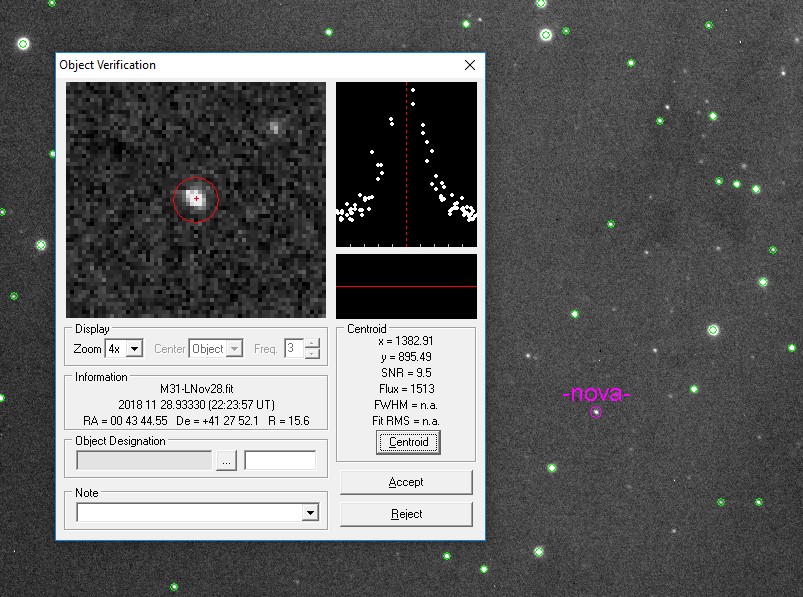After an unsuccessful nova patrol I had a look at the Heart Nebula in Ha.
The field of the telescope only covers a small part at the centre of the nebula.
14 x 10 minutes.
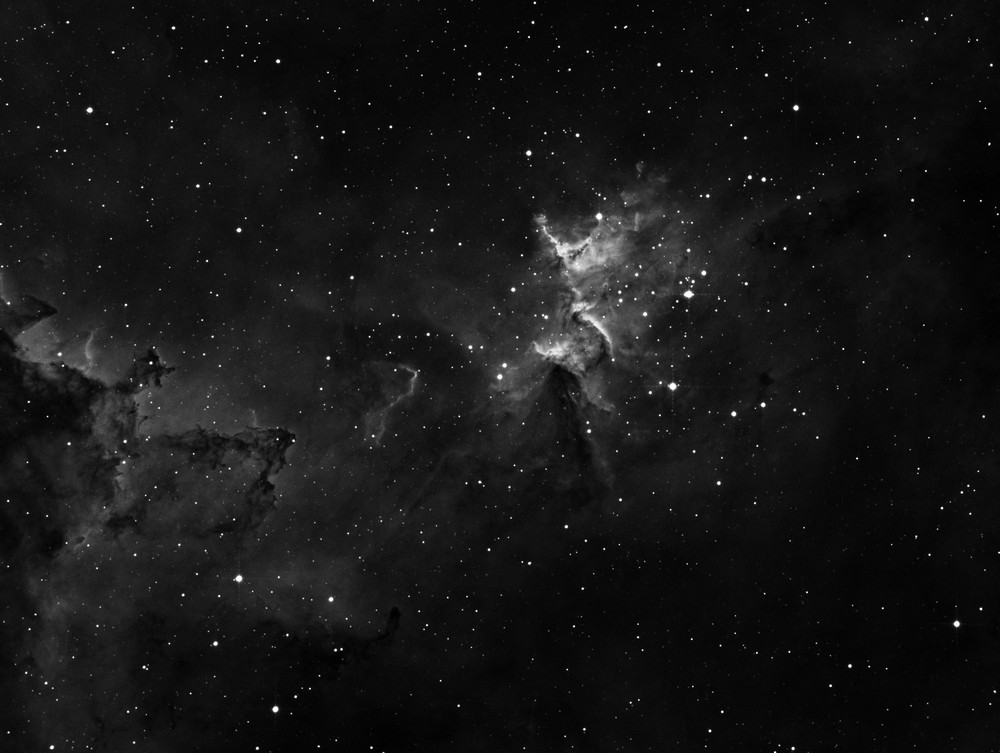
11th November
ngc281 Pacman nebula
21x10 minutes in Ha
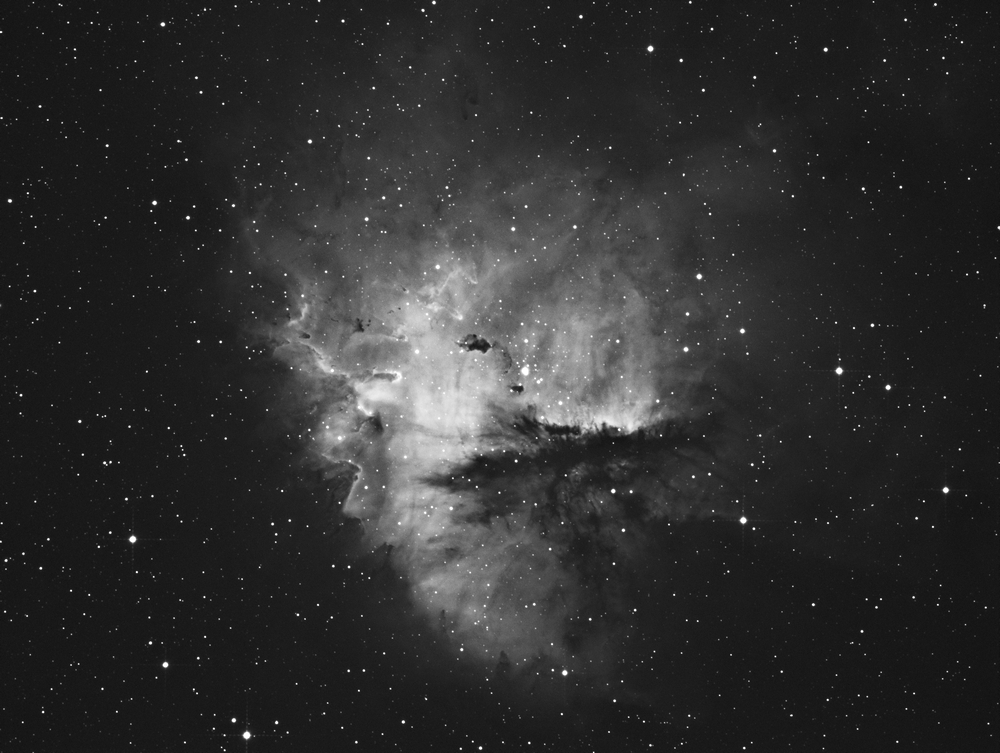
17th November
ngc281 Pacman nebula
Bicolour image. 21x10 Ha, 26x10 SII
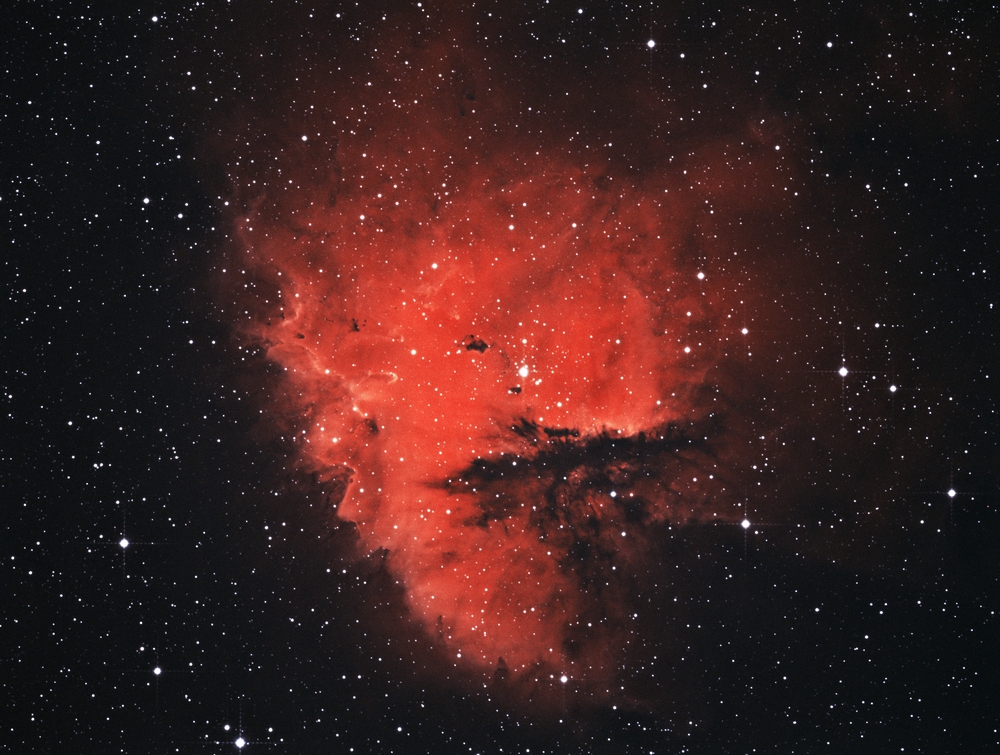
18th November
ngc281 Pacman nebula
Hubble pallete image. 21x10 Ha, 26x10 SII. 25 x 10 OIII
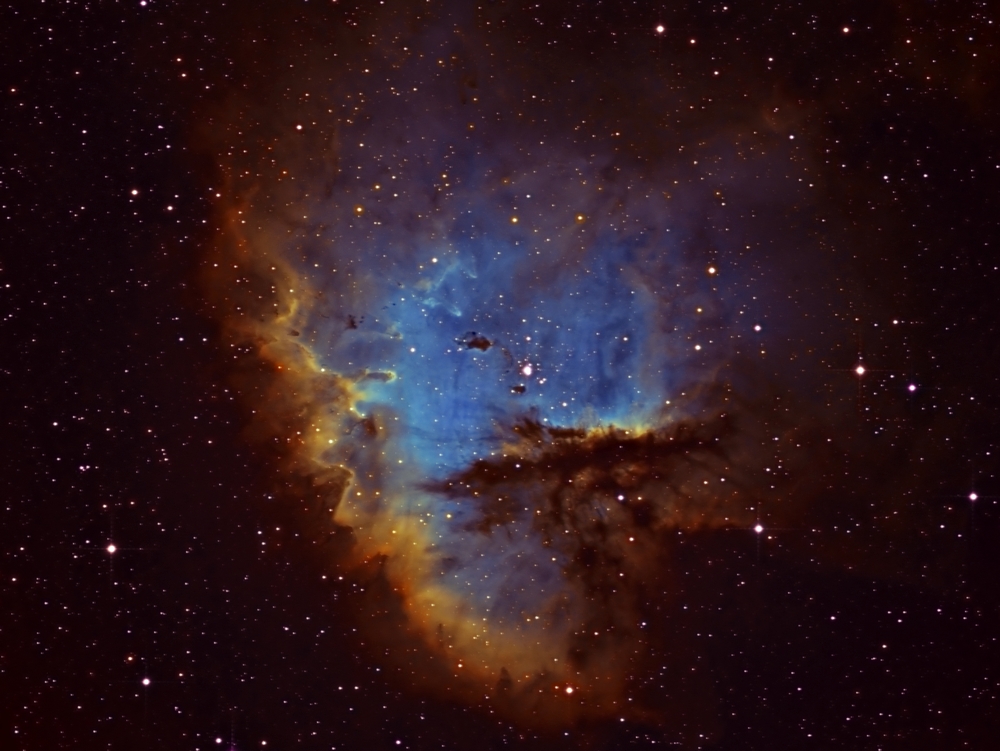
Different processing:
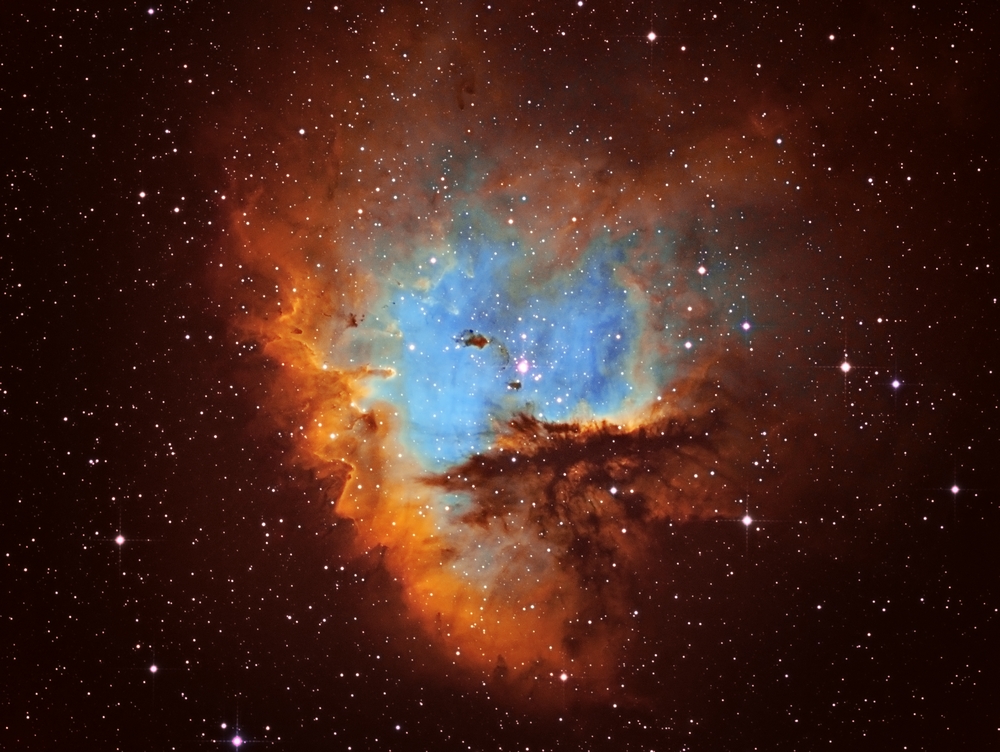
Another variation:
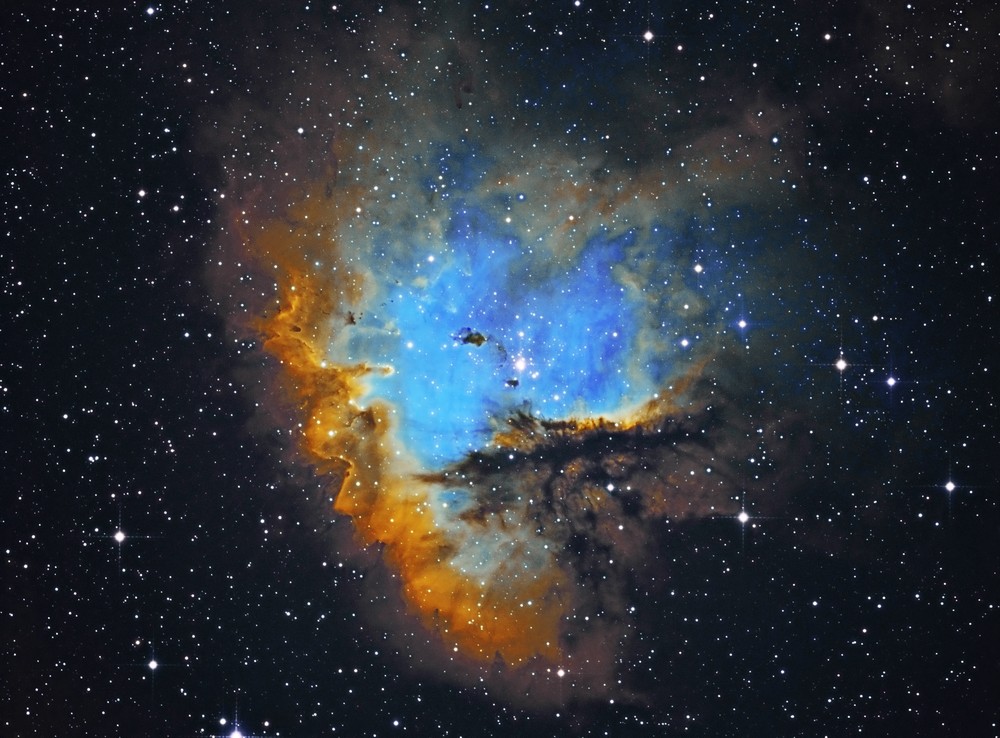
Asteroid (48601) 1995 BL
When imaging M31 I saw a moving object on five succesive frames. The Minor Planet Centre showed it to be (48601) 1995 BL.
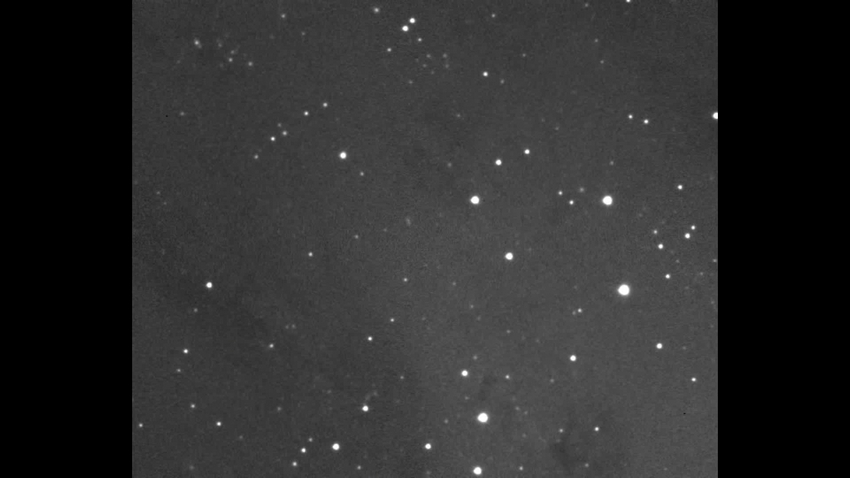
26th November
Possible nova discovery in M31
I was not expecting clear sky due to a poor forecast so was surprised to look out and see twinkling stars.
Very soon I spotted an object in M31:

I checked the DSS maps, Simbad and Panstarrs plus the Minor planet centre.
Also the list of previous M31 novae. Nothing could be seen at that location.
DSS image
PanSTARRS
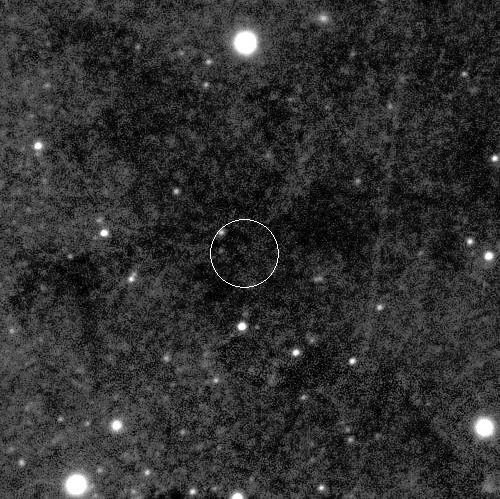
Simbad.
The nearest known object is [KLG2007] GC3 131 which is 8.34 arcseconds away.
I sent a message to the Transient Name Server and they published AT 2018jas
I have emailed a few people to see if a confirmation image can be obtained.
Astrometrica shows a magnitude of 18.4
The image subtraction method shows the object clearly.
The image is subtracted from a reference image - any new objects show up black.
The other black dot (lower left) is a variable star that has increased in brightness.
The minor planet check showed that the brightest asteroid in the region was 2010 HD29 at magnitude 19.3.
This asteroid was -6.4 minutes RA and +8.3 minutes DEC away from 2018jas so no conflict possible.
19.3 is too faint for my equipment to detect. Nevertheless, I checked the region and could not see it.
27th November
Possible nova discovery in M31
Cloudy and raining here so no chance of images. Kamil Hornoch from the Czech Republic got some
images and says that the object is much brighter, now around 16.7 magnitude.
I logged on to iTelescopes in Spain and took 4x120 second images with T18 which is a Planewave CDK 318mm scope.
The image is rotated 137 degrees which makes it difficult to see what is going on, but after de-rotation
I saw the transient at magnitude 16.4
This is a comparison image showing the remarkable increase in brightness:
28th November
Possible nova discovery in M31
The object lies right near the edge of one of the Subaru 2.0 metre scope frames.
However, there is no star at that location in the Subaru image:
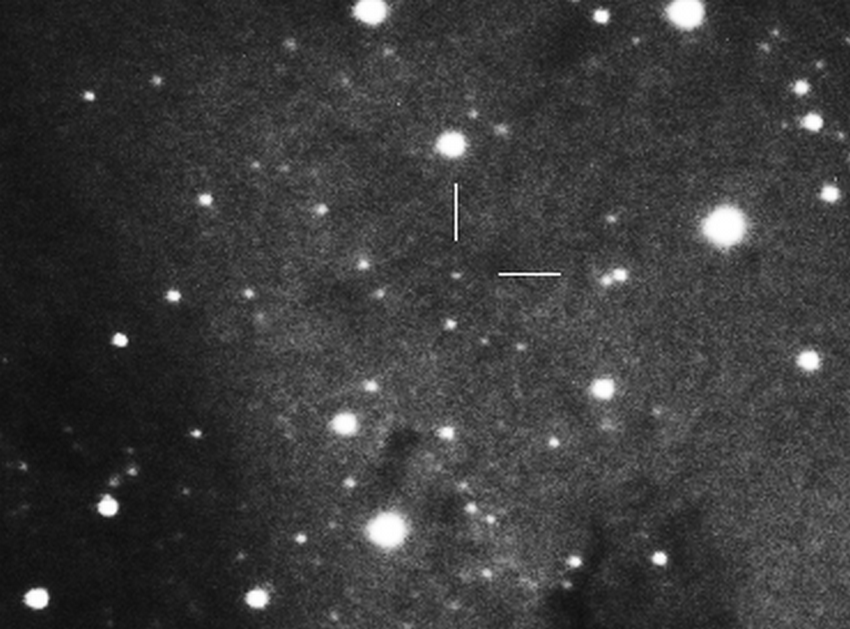
It is now official - the object is a classical nova eruption.
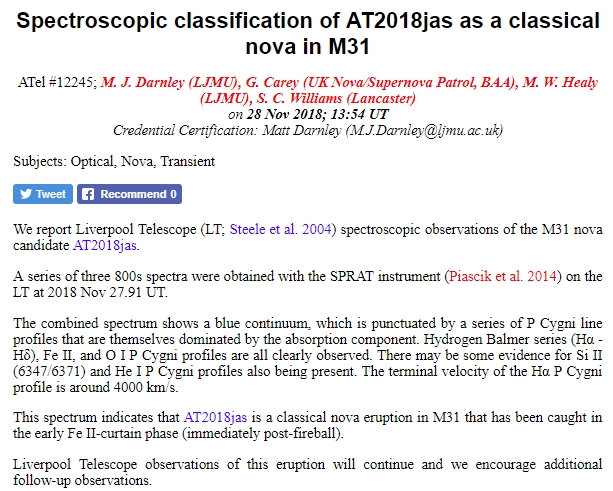
Remote image fromSpain - nova magnitude 15.6
